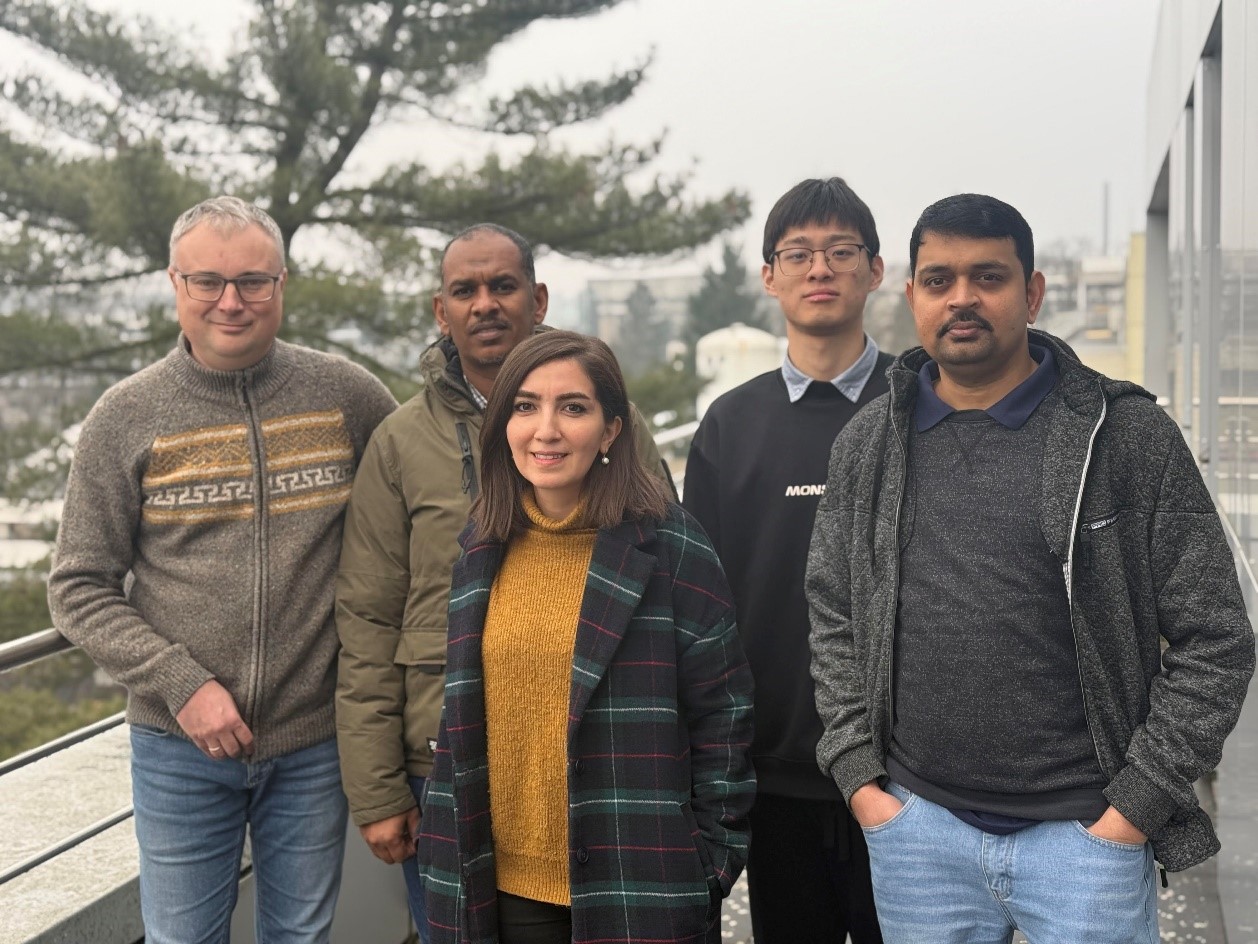Materials for Spectral Conversion (MSC)
Welcome
Our team specializes in the development of cutting-edge Stokes and anti-Stokes (up-conversion) luminescent materials. These materials have applications in diverse fields, including photovoltaics, photocatalysis, materials recycling, and anti-counterfeiting.

Turshatov's group: (from right to left) Dr Krishnan Rajagapolan, MSc Yang Lu, Dr Arezou Fazli, Dr Abdelrhman Mohmmed, Dr Andrey Turshatov
Subject areas
Our research focuses on the synthesis, structural and optical characterisation of inorganic and organic luminescent materials. We pay particular attention to the measurement of the phtoluminescence quantum yield (PLQY) using an integrating sphere and the discovery of correlations between optical and structural properties. Only materials with high PLQY are relevant for applications in photovoltaics, materials recycling and anti-counterfeiting.
Tracer-based sorting can significantly improve the recyclability of plastic packaging materials.
We are developing core materials for advanced plastics sorting technology - tracer-based sorting. By using luminescent tracers, the yield and purity of the sorted fraction can be increased to levels not achievable with state-of-the-art near-infrared sorting. These inorganic tracers should fulfil several important requirements, e.g. high photoluminescence quantum yield and strong absorption, narrow particle size distribution (in the range of a few microns), exceptional chemical stability and biocompatibility. To meet these criteria, we are exploring various lanthanide-doped inorganic phosphors.
Down- and up-conversion materials for solar light harvesting
We are investigating unconventional luminescent materials. For example, down-conversion materials: these enable luminescence with breakthrough quantum yields greater than 100%; or up-conversion materials: these materials enable the absorption of longer wavelength (lower energy) photons and their re-emission as shorter wavelength (higher energy) photons. These novel phosphors open up exciting possibilities for advanced applications such as photovoltaics and photocatalysis.
Singlet oxygen photosensitisers help break down organic micropollutants in water
We are developing advanced photocatalytic membranes for the oxidation treatment of water, designed to effectively remove organic micropollutants. These membranes consist of porous polymeric supports combined with organic photosensitizers, such as porphyrins, to generate singlet oxygen. This reactive species enables the oxidation of pollutants at extremely low concentrations—down to 100 nanograms per liter—providing a highly efficient and sustainable solution for water purification.

